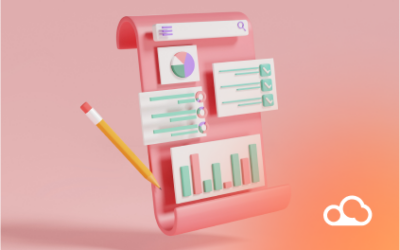
Developing a data-driven culture: 7 points to know
The data revolution is profoundly transforming companies and their organizations. Going into 2023, thriving in this digital world is impossible without a data-driven mindset. While it can be difficult to know where to start, there are a few key steps to consider when positioning your organization toward a data-centric work culture.
1. Data-driven culture is a decision culture
A critical characteristic of a data-driven organization is using data to make well-informed decisions. Every company has access to a staggering amount of data, however, if the data is not well-organized or of high quality, it is next to useless.
2. Executive engagement in a data-driven culture
The commitment of senior executives, CEOs, founders, or anyone else in a company’s hierarchy is critical for a healthy data culture to flow into the organization.
Without executive support, data governance will stall. And without a data approach within the hierarchy, how can we believe that data culture will be promoted in the company or that the right decisions will be taken?
3. For a democratic use of data
Data users are always asking for a better organization of data flows. This allows them to work efficiently and more serenely.
But imposing data management tools is not ideal, as it will create a feeling of resistance to change among some. In addition to creating a blockage among users, this practice is counterproductive. It is, therefore, preferable to encourage sharing a common data culture, starting with the basics so that everyone can participate in its internal dissemination and better understand its challenges.
4. Data-driven culture rules to respect
No data culture and data exploitation can work without thinking about security issues. Companies must foresee how this data will be used to introduce a common data culture.
What systems should be put in place to guarantee data security? What are the regulatory requirements? Suppose the collection of data and its use is inevitable. In that case, it is necessary to secure it, no matter at which level of exploitation it is: analysis, data processing, distribution to all employees…
5. Data users: activators of the data culture
The introduction of a data-driven culture is not always well received. There are always people who are reluctant to change in a top-down way. The best way to implement an optimal data culture without facing rejection is to ask for the participation of all business teams and to implement a bottom-up strategy.
In any case, there will always be employees who will be the carriers of the Data Governance project, from the analysis of the data to its distribution. These DataBakers will help evangelize the data culture within all departments, between operational teams, and their superiors.
6. Always more data sharing
A shared data culture saves time but also facilitates the transmission and sharing of collected data.
If each employee knows the rules and best practices to be applied in the governance of the company’s data, the proper circulation of data is facilitated. It is therefore essential to define the rules to respect and the practices to follow.
7. Ambassadors of the data-driven culture
Successfully developing a data-driven culture is not enough. It must be disseminated to as many people as possible within the company.
For it to be adopted by all employees, the data culture must be conveyed by ambassadors. With the acceleration of digital transformation and the increase in the number of organizations handling more and more data, data culture is becoming an urgent need, combined with controlled data governance.




